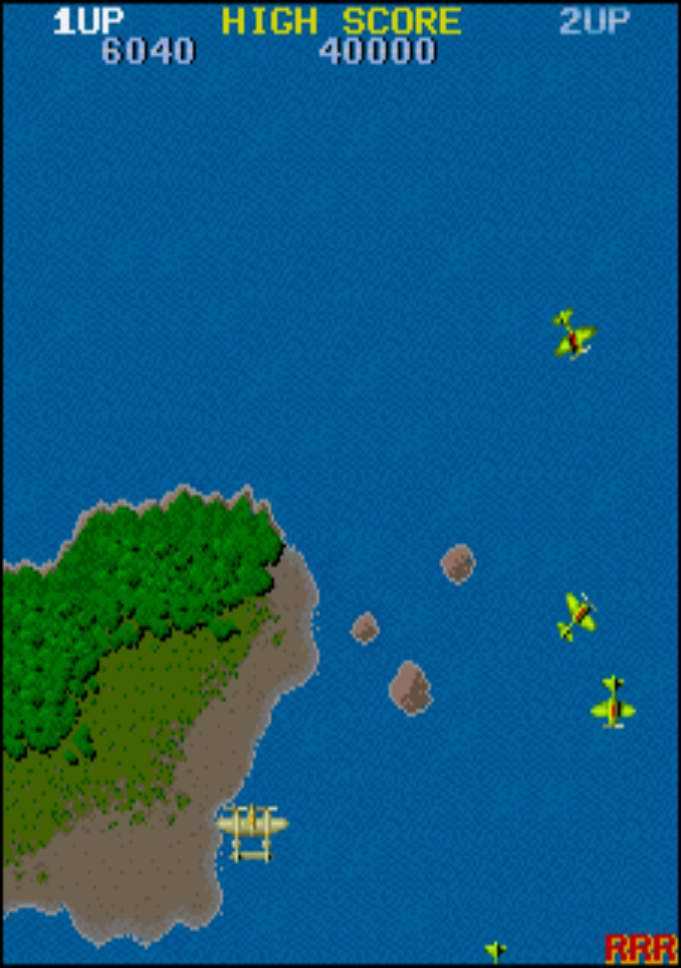1942
Smoke on the water, fire in the sky.
In 1942 (the game and the year), the world is in the throes of global conflict. Your contribution to world peace surmounts to taking on the might of the Japanese air force with a single war plane decked out with twin machine guns and a nifty loop the loop trick that baffles and bewilders the dim-witted enemy.
On taking off from your illustrious aircraft carrier, the game throws wave after wave of mindless, twisting, spiralling, ducking and weaving enemy aircraft shooting armour piercing bullets at your plane as you zigzag around the vertical scrolling play area performing acrobatic stunts.
The cowardly enemy pilots give in surprisingly quickly, flying off the sides of the screen and back to base with a Japanese equivalent of a court marshal waiting for them on their return home. A player could, if they felt so inclined, fly through each level without firing a single bullet, evading the Japanese planes and their ammunition until the traditional end of level boss makes an appearance.

With games such as Gyruss and Time Pilot firmly under his belt whilst at Konami, designer Yoshiki Okomoto put Capcom firmly on the formulaic Shoot-‘em-up map with 1942; unleashing thirty two levels of overzealous enemies, eight bosses and a range of power up options upon a generous and eager fan following that quickly formed around his stylish machine.
Not the best example in its genre, 1942 set a reasonably high benchmark in 1984 that both its sequels and the competition struggled to live up to. Great artistic cabinet design accompanied by a simplistic, easy to play game ensured 1942’s success and classic status.
